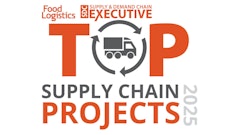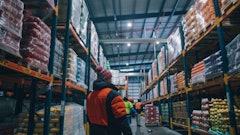
While most companies are relocating to existing properties and retrofitting space, DPS is building a 850,000-square-foot facility in San Bernardino County.
Cities across the country are vying for the attention of the food and beverage industry, seeking a seat at the table with companies that are shopping for a new place to call home. However, the ups and downs of the economic cycle are forcing game-changing strategies. The food and beverage manufacturing and distribution landscape is undergoing a sweeping change as companies shift operations oversees or consolidate operations into larger but fewer facilities.
The opportunity to capture these industries has not faded, it has simply changed. Companies are now more closely evaluating how each new facility can impact the bottom line. Developers, landlords and economic developers alike are becoming more creative in their approach to differentiate themselves from the competition.
A new site selection strategy has emerged out of this competitive market, sustainability. When the Plano, TX-based soft drink conglomerate, Dr Pepper Snapple Group (DPS), began scouting for a new facility that would become its Western manufacturing and distribution hub, the City of Victorville, CA, was able to offer an all-encompassing sustainable package. This package, including its location, development, business incentives and infrastructure put Victorville on the top of DPS’s list.
Reducing operational costs through green development, energy-efficient building features and LEED Certification are all valuable selling points, and are quickly becoming the norm. Green building codes have even become the law in 19 states including California, Arizona, Florida, Illinois and Texas. Now the competitive advantage goes to those who can provide sustainable benefits and incentives beyond the building.
Strategic Location
Choosing the right location for its new manufacturing and distribution was a key part of the Dr Pepper Snapple Group’s consolidation strategy—to move production closer to its Western markets. Located in the high desert submarket of California’s Inland Empire, Victorville offered the right mix of access to available land, a large skilled labor pool and a transportation network for efficient movement of supplies and products, allowing DPS to save money on transportation costs while reducing its carbon footprint. The DPS facility will employ more than 200 local workers, reducing road congestion and vehicle emissions; and its proximity to local markets cuts down on emissions and fuel consumption.
Making Development Possible
In the current economy, new development is rare. While most companies are relocating to existing properties and are forced to retrofit the space, DPS is developing a new 850,000 square foot, build-to-suit, state-of-the art center on a 57-acre site in Victorville, making it the largest construction/manufacturing project completed in San Bernardino County, the largest county in California and one of the largest in the country.
The DPS facility is located within Southern California Logistics Centre (SCLC), a 2,500-acre commercial and industrial complex that is part of a larger master-planned integrated commercial and industrial development, the Southern California Logistics Airport (SCLA). Among its many business-friendly incentives are available and affordable land, as well as LAMBRA Enterprise Zone tax credits—making new development possible in the region where it is cost-prohibitive in others.
SCLA is also leading the nation in green development and operational standards, as many of its new facilities are LEED Certified or registered. SCLA is home to the first LEED Gold Certified industrial warehouse in California, which boasts more LEED-certified projects than any other state in the country.
During the site selection process, one significant operational and financial challenge presented itself. Victorville’s current wastewater treatment system was not equipped to economically handle the volume or provide proper environmental management of the wastewater discharge expected from the DPS facility, approximately 550,000 gallons of wastewater per day when fully operational.
To overcome this challenge, the City of Victorville is constructing a new $30 million wastewater treatment plant designed to accommodate industrial and domestic discharges. Victorville’s development of the new wastewater treatment plant proved to be a key factor in DPS’s final decision to locate to the city.
Developing A Food Cluster
Shortly after DPS announced its operations in Victorville, Plastipak Packaging Inc., a global leader in product packaging, announced its plans to occupy a 260,000 square-foot LEED Gold-Certified building also within SCLA. The company will manufacture plastic bottles to be used at the DPS production facility, as well as other major consumer product manufacturers.
The bottling company will also utilize Victorville’s new wastewater treatment plant. Plastipak’s existing customers include Proctor and Gamble, Pepsi, Kraft Foods, Kroger and Tropicana.
The relocation and expansion of Dr Pepper Snapple Group and Plastipak have laid the foundation for a food and beverage industry cluster in Victorville.
With its location, business incentives, sustainable leadership and infrastructure, Victorville has met the unique demands of the food and beverage industry, putting itself in prime position for growth in this evolving and competitive market.
Metzler is director of economic development, City of Victorville, CA.


















